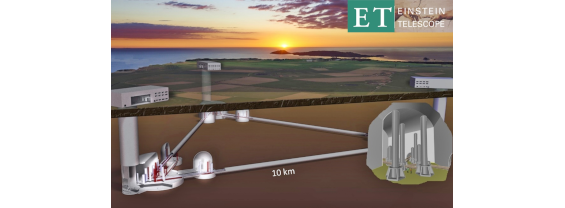Strengthening the fundamental-physics science case for the Einstein Telescope

Two papers recently published by our group in Physical Review Letters have explored two scenarios in which the proposed third-generation gravitational-wave (GW) detector Einstein Telescope (ET, recently included in the ESFRI roadmap) would provide a significant improvement with respect to current detectors for what concerns tests of fundamental physics.
In the first paper, it was shown that GW measurements of the tidal deformability in neutron-star binary coalescences can be used to infer the still unknown equation of state (EoS) of dense matter and to discriminate among families of nuclear-physics based EoS which differ in particle content and ab-initio microscopic calculations. The constraining power of LIGO-Virgo is not enough even at design sensitivity to discriminate between EoS with similar softness but distinct microphysics. However, just a single detection with ET will rule out several families of EoS with very strong statistical significance, and can discriminate among models which feature similar softness, hence constraining the properties of nuclear matter to unprecedented levels.
The second paper explores the possibility of a novel GW source for ET and the future space-based mission LISA: the inspiral of a subsolar object around an intermediate-mass or supermassive black hole. These events would be a smoking gun for the existence of primordial black holes possibly formed in the early Universe, which could provide a significant fraction of the dark matter and would be unique probes of inflation. It was shown that these sources can provide unparalleled measurements of the mass of the secondary object at a subpercent level for primordial black holes as light as 1% of the solar mass up to luminosity distances around hundred megaparsec and few gigaparsec for LISA and Einstein Telescope, respectively, in a complementary frequency range. Interestingly, these novel sources would be out of the reach of current detectors so they could be potentially measured only with next-generation instruments.
More information
Ranking Love Numbers for the Neutron Star Equation of State: The Need for Third-Generation Detectors
Costantino Pacilio, Andrea Maselli, Margherita Fasano, and Paolo Pani
Phys. Rev. Lett. 128, 101101 (2022)
Susanna Barsanti, Valerio De Luca, Andrea Maselli, and Paolo Pani
Phys. Rev. Lett. 128, 111104 (2022)
